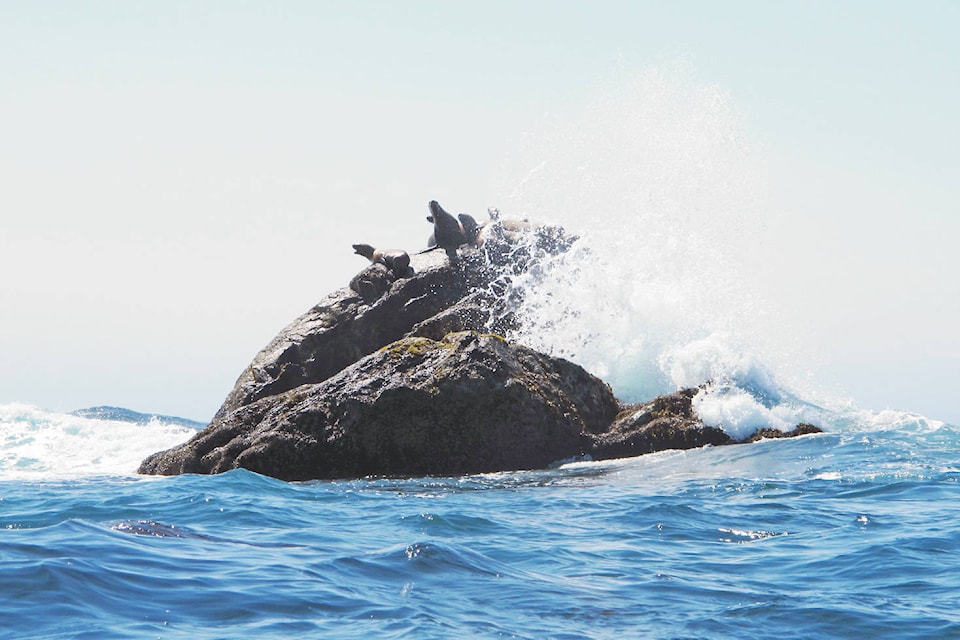Retired fisherman Roy Jones Jr. is leading a new group as part of his 37-year campaign to get a cull on B.C. seals and sea lions.
“They’re impacting rivers and streams throughout the whole B.C. coast,” Jones said.
“Our salmon stocks, our herring stocks — everything’s collapsing.”
Jones is a Haida elder and president of the new group, called the Pacific Balance Pinnipeds Society. It includes directors from other First Nations as well as the fishing and fur industries.
The society aims to have Fisheries and Oceans Canada (DFO) set an annual quota for seals and sea lions, and then process them for meat, clothing, Omega-3 vitamin supplements and other products.
“If we’re smart about it, we could use the whole animal,” Jones said, noting that seals are still hunted in Canada’s Arctic and East Coast waters.
Recent data shows the B.C. population of Steller sea lions has grown fourfold since the previously culled species was protected in 1970. According to the latest survey, done in 2013, there are about 32,900 across the B.C. coast, and they remain a “species of special concern” under federal law.
Population aside, Steller sea lions are protected in B.C. because 70 to 80 per cent of pups are born in a single area, the Scott Islands, though Haida Gwaii also has rookeries at Cape St. James, the Garcin and now Joyce Rocks.
Harbour seals, meanwhile, are thought to number about 105,000. According to DFO researchers, the population grew quickly in the 1970s and 1980s following the end of hunting in 1967 and a bounty program that finally ended in 1971.
But the seal population been fairly stable for nearly 20 years.
Speaking on Haida Gwaii last year, Sheena Majewski, a pinniped research biologist, said DFO used to run culling programs and allow fishers to shoot seals and sea lions, noting there was a common belief that seals, sea lions and also whales were competing for fish, and salmon especially.
“I keep telling people, I think my job in the sixties would have been taking a team of people to machine-gun the sea lion rookeries,” she said. “It was a very different management approach.”
Majewski also pointed out there was no big jump in salmon numbers after the culling and hunting programs ended.
Other researchers have estimated that salmon may make up just four per cent of harbour seals’ diets. Instead, the seals feed largely on herring and hake, which is a predator of salmon smolts.
Meanwhile, growing numbers of transient killer whales also hunt seals, which should slightly lower the seal population and keep the transient population strong.
Jones questions the accuracy of DFO population surveys, and believes seals have a higher impact on salmon populations because they target egg-laden females.
Around Langara Island and other areas where sport fishers catch-and-release salmon, Jones said sea lions are never far behind.
“Catch and release is just a sea-lion feeding program,” he said, comparing it to being dragged around by a horse in a corral for 20 minutes with a cougar waiting on the fence.
At 67, Jones is just old enough to remember a time when DFO fishery officers gave his fisherman father five boxes of .303 ammunition to shoot any sea lions that interfered with his bait pond.
Jones also got one seal bounty, just before DFO closed it.
“It was Easter time, and we were down in Cumshewa Inlet. I shot my first seal, and I was 13 years old,” he said.
“My dad let me cut the nose off it and when I went into Fisheries I got my $5.”
Jones said the Pacific Balance Pinnipeds Society, which is advocating for humane culling methods, is not concerned they would ever extirpate harbour seals or sea lions from the coast, even if they wanted to.
“You’ll never get them all,” he said. “They’re incredibly intelligent.”
